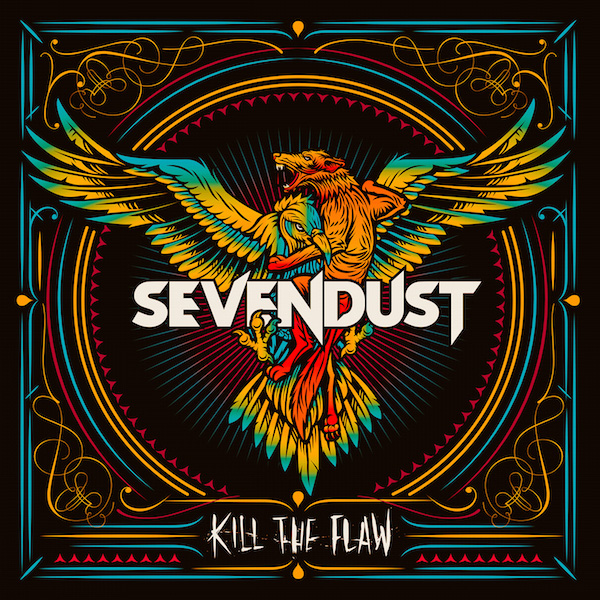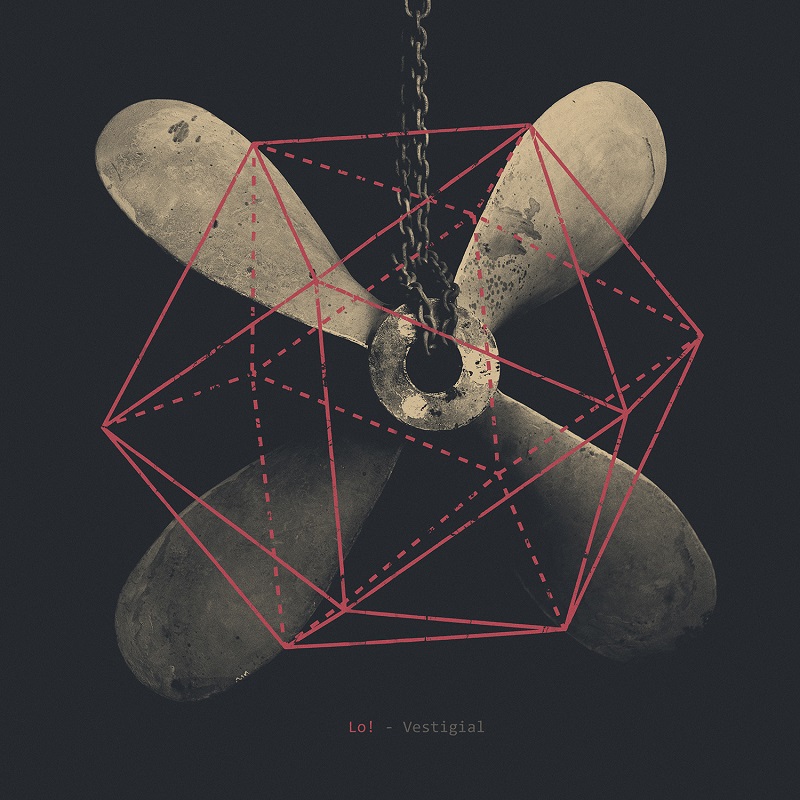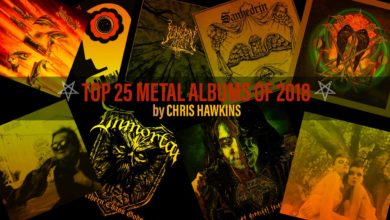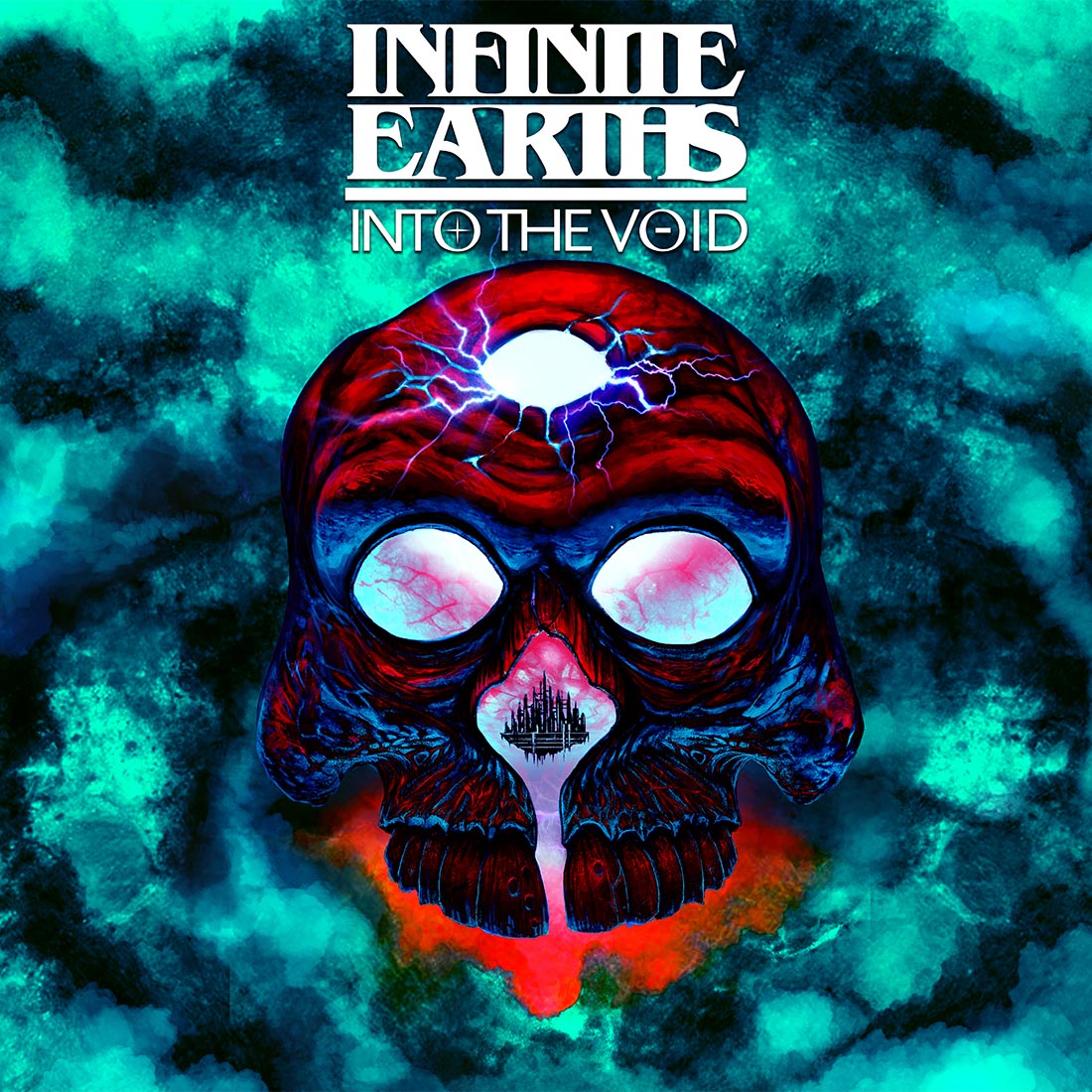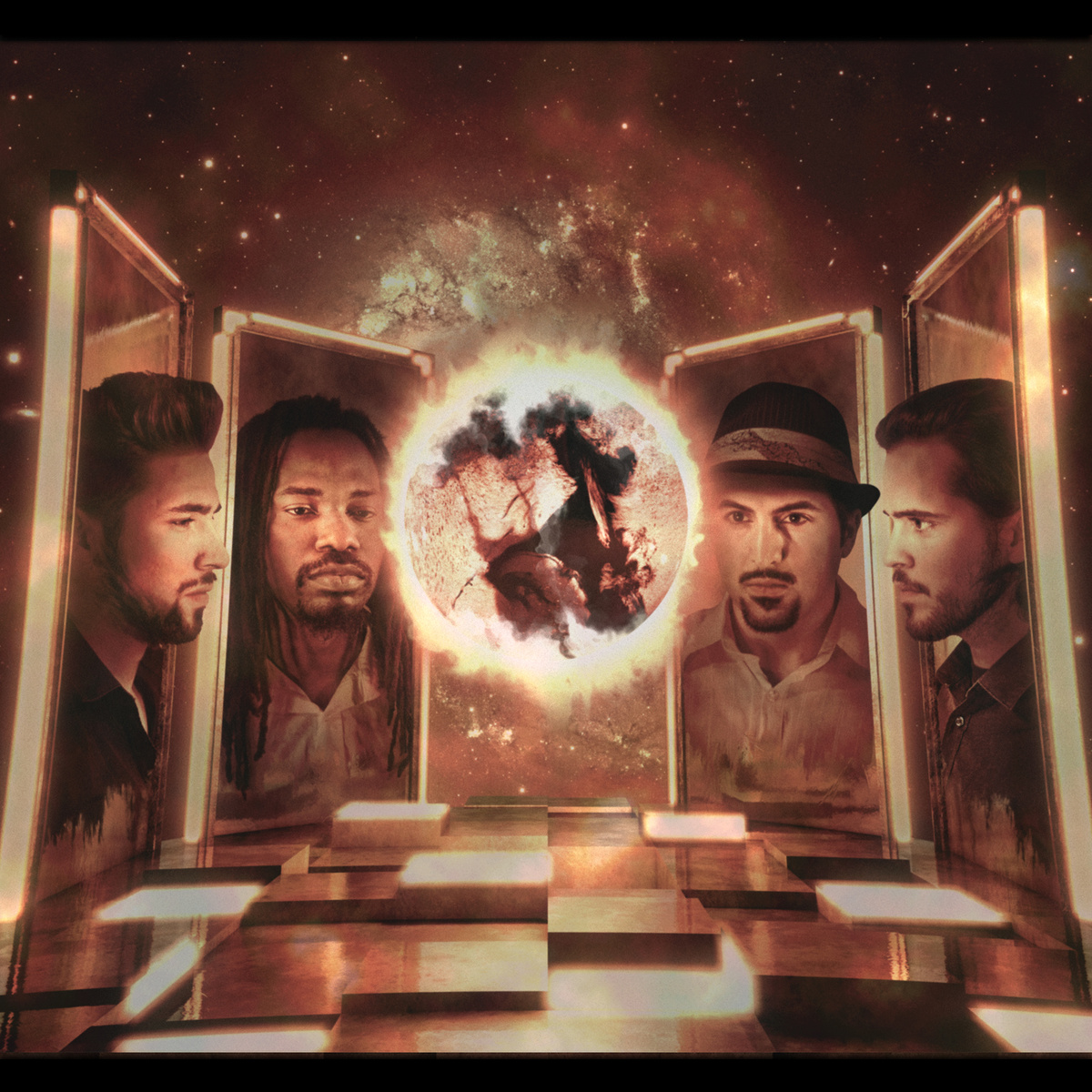SEVENDUST – Kill The Flaw
Overall, Kill the Flaw delivers the mix of lyrical poignancy and stylistic darkness that longtime fans crave with a ton of heart and a graceful flow.
Although not a common name checked as a staple of late 90s nu-metal, Sevendust managed to blaze their way to gold-stardom. Even after nu-metal’s decline, they successfully broke the boundaries between alternative and metal, and eliminated any traces of hip-hop entirely. With a career lasting 10 albums across a 20-year span, the band still sounds as fresh as ever. Their latest release, Kill the Flaw, is undoubtedly raw, while simultaneously emanating a seasoned melodic maturity. [columns] [column size=”1/3″]
Album Title: Kill The Flaw
Release Date: 02 October, 2015
Playing Time: 00:47:46
Label: 7Bros. Records
Having a recording lapse of at least a few years can warrant definite transformation, and on this album, it shows. Right from the first track, “Thank You,” the scope of sound feels noticeably clearer. The electronic backing throws a brisk breeze against the display of chugging riffs, which almost exhibit an industrial feel. When Lajon Witherspoon begins singing—his vocals actually the best they’ve ever been—the vibe becomes emotive with reverberated and semi-distorted guitars. At the chorus, not only does Witherspoon confess to his wrongdoings, but even acknowledges the times of hindrance as a catalyst for moving forward. A similar melody shapes the intro of “Death Dance,” and its transitional tremolo effect proved clever. The big bass edge throughout the song accentuates its presentation, making the notes dance their way into various styles, including a bouncing staccato during the verses and a gliding lead during the chorus. I liked how the instrumental break in the 2:37 was an intensified version of the verse melody, yet its execution is well-paced with sparse upward and downward scales. While the album’s main stylistic focus seems to lean toward prominent drop-tuned melodies and experimental rhythms, I actually found “Letters” to be an interesting fit. The song itself is particularly streamlined. Its guitars aren’t nearly as defined here and the drums have quite a predictable queue. However, it is a perfect example of the band’s ability to write a catchy single, and a decent one at that. The lyrics maintain the concept of acknowledging one’s faulty actions through a unified struggle, while at the same time keeping a strong determination. In doing so, the song’s inclusion wasn’t entirely unnecessary, as the track to follow, “Cease and Desist,” keeps the same hook structure, albeit with a contrasting lyrical approach and subsequent return to form.
By the latter half of the album, the balance stays consistent. “Chop” was another song that intrigued me, once again for its hybrid of experimentation and ‘single’ appeal. The acoustic guitar adds an upbeat bounce that is greater emphasized during the verses. Its transitions to heaviness play out extremely well, given the equal brightness of the two styles. I liked how the structure of the chorus deviated from the standard 4/4 signature, yet the vocals flow fluently and consistently atop the instrumentation. As the album reaches its remainder of tracks, the line between complexity and accessibility becomes increasingly blurred. Perhaps the greatest utilization of both components comes in “Peace and Destruction,” which seems to be a fitting description for the melding of styles and lyrics presented in the song. There’s a rather ironic twist through the soulful, uplifting verses and the chorus, in which faith is deemed an obstructive force, rather than a tool to heal. On the final track, “Torched,” it’s clear that the fires of hell have assumed total dominance—nothing but constant bullet riffs and spastic discord blaze throughout the song, and the inevitability of death emits a feeling of hopelessness. The repetitive nature of the instrumentation plays like a trap for the soul—one that is prevented not only from salvation, but from realizing ultimate eternal life.
Overall, Kill the Flaw delivers the mix of lyrical poignancy and stylistic darkness that longtime fans crave with a ton of heart and a graceful flow. For all the situations of hellish detriment that are expressed, they aren’t too far off from the everyday human experience. Sevendust have truly learned not only to transcend a fad, but to recognize their will in keeping their horizons limitless and expanding.
[8/10] [separator style=”space” /] [blog type=”alt” tags=”sevendust-photos” heading=”Sevendust – Concert Photos” heading_type=”block” /] [separator style=”space” /]

